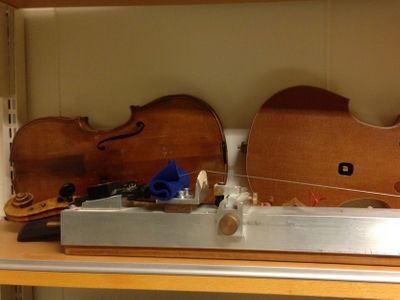Akustik: Akustiska vågekvationen. Plana och sfäriska vågor. Elektroakustiska-mekaniska analogier. Egenmoder. Strängar. Membran. Rör. Fouriertransform-spektrum.
Örat och hörseln: Örats fysiologi. Frekvens och tonhöjd/tonläge. Vibrato. Amplitud och hörnivå/hörstyrka. Maskering. Spektrum, klang, strävhet. Perception av ljudföljder.
Musikinstrumenten: Mekanisk konstruktion. Excitationsprinciper. Källspektrum, återkoppling och spektrumformning i resonatorsystem. Spektralt innehåll: stationärt ljud och transienter. Strålningsegenskaper. Bleckblås. Träblås. Stråk. Piano. Orgel. Sångröst.
Skalan i teori och praktik: Liksvävande temperatur. Pytagoreisk och ren skala. Mätningar på spelad musik. Ren och sträckt oktav.
Rumsakustik: Rumsakustiska grundbegrepp. Ljudutbredning i rum. Podieakustik. Binauralt hörande.
Modellering och datormusik: Syntesmetoder, ’physical modeling’, val av styrparametrar.
